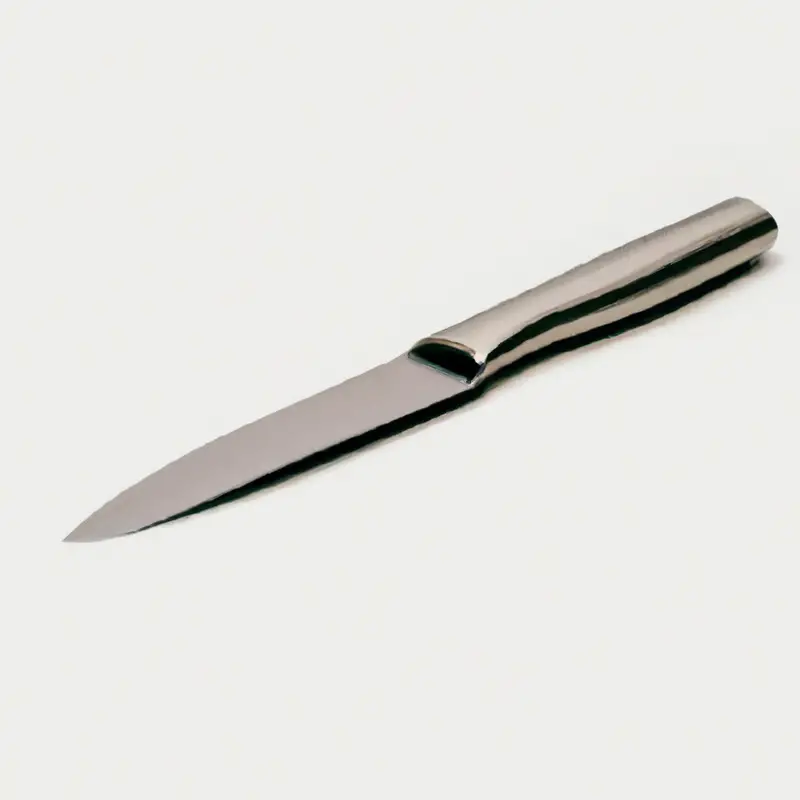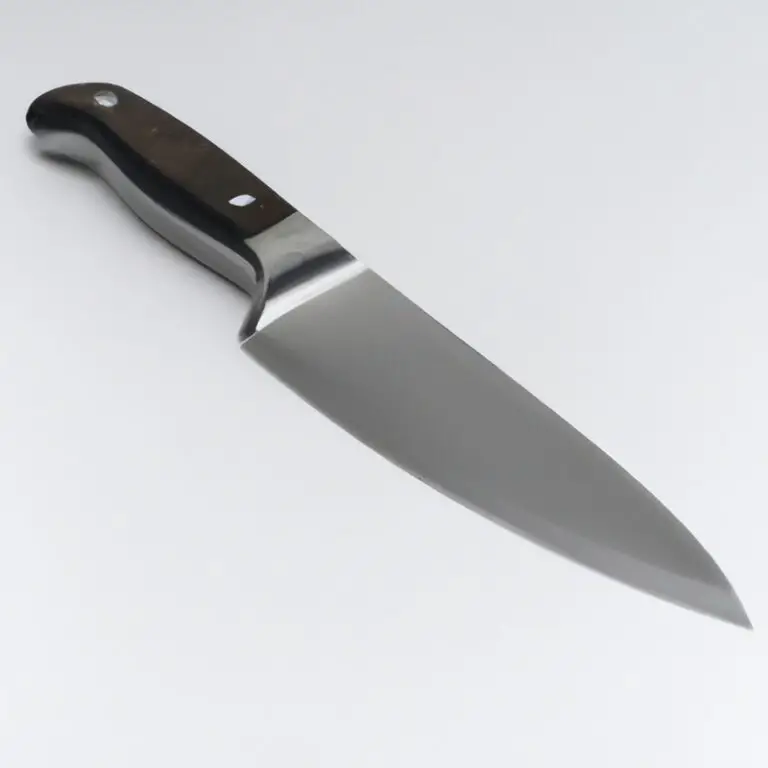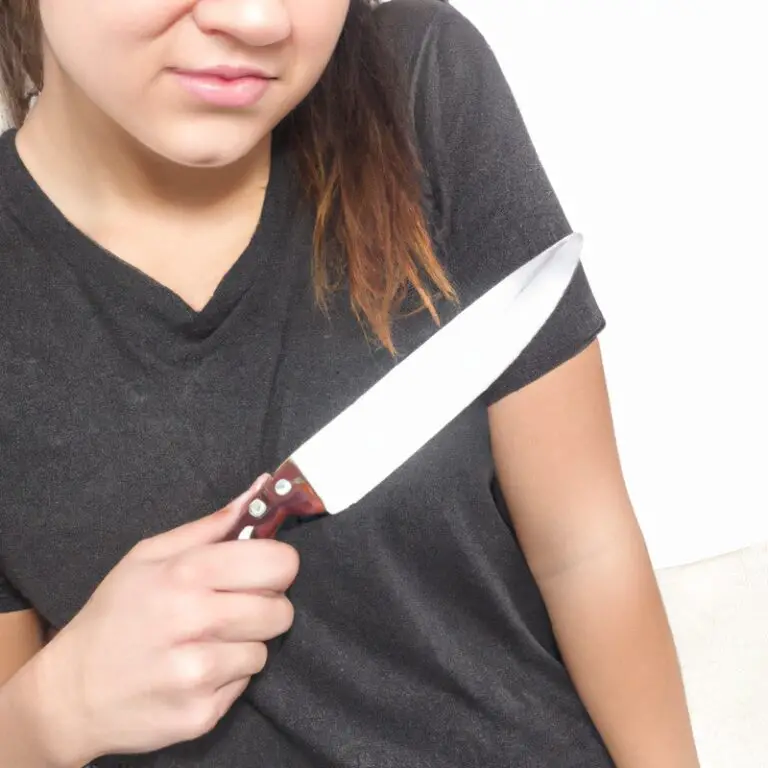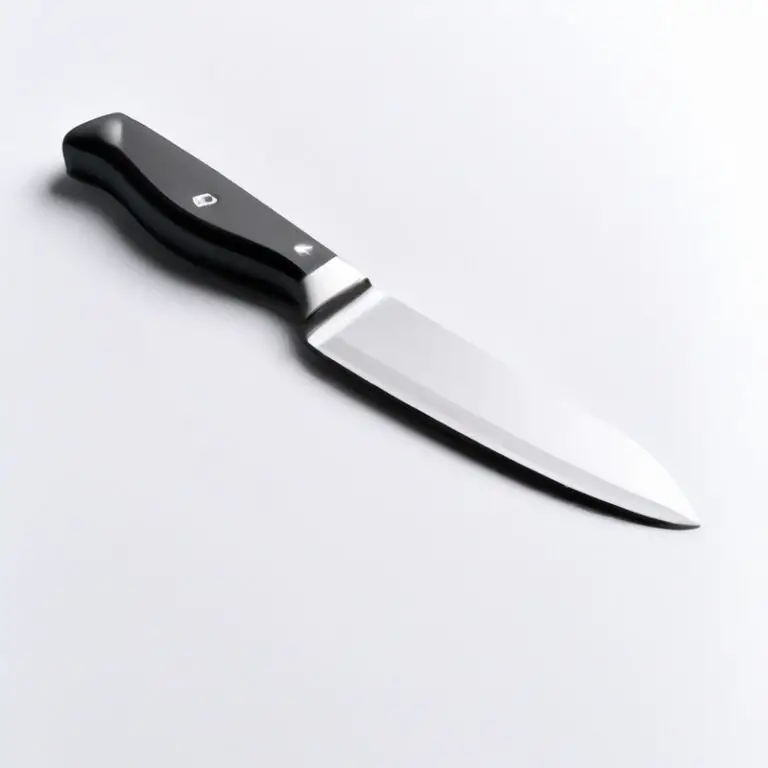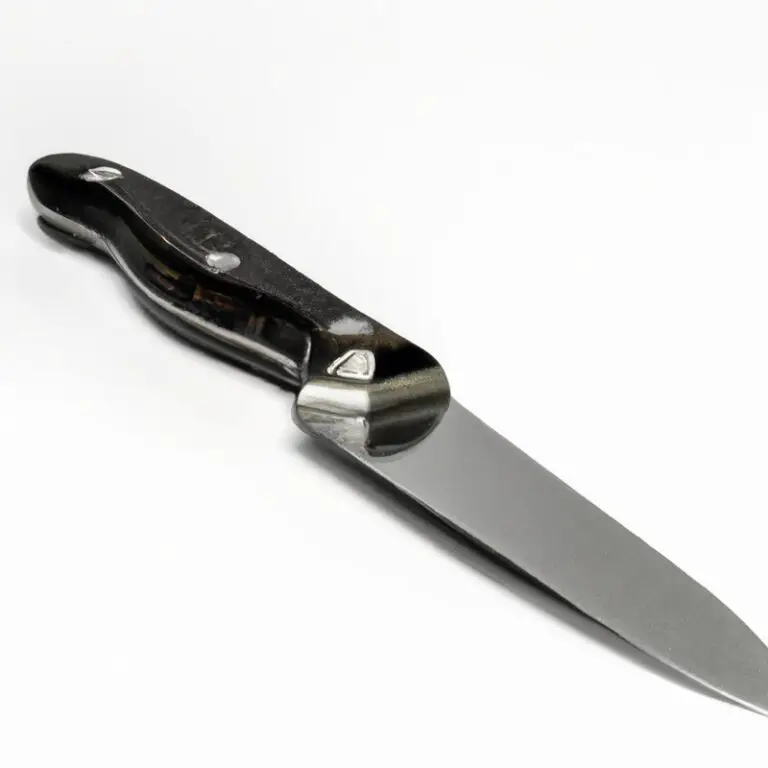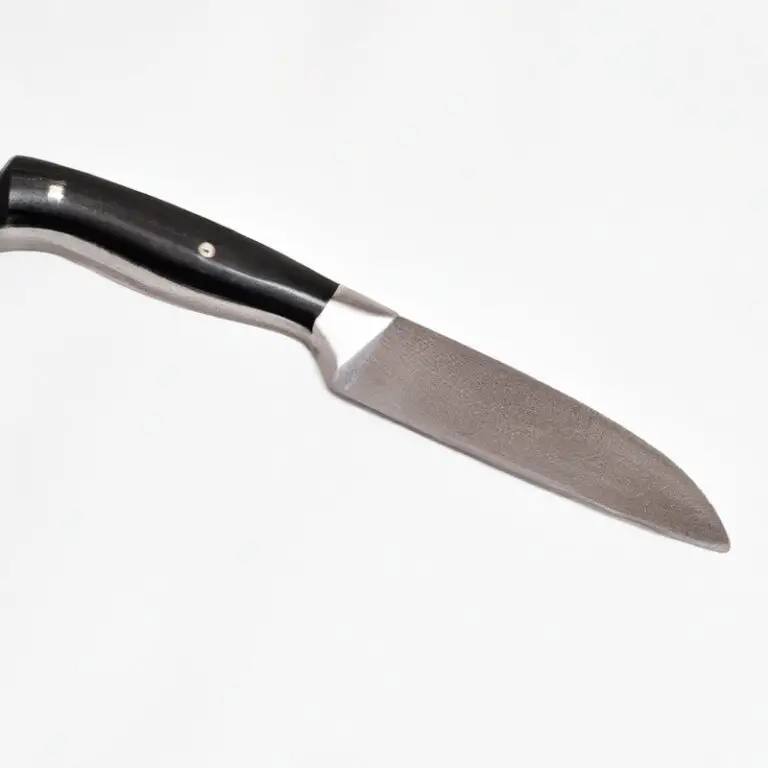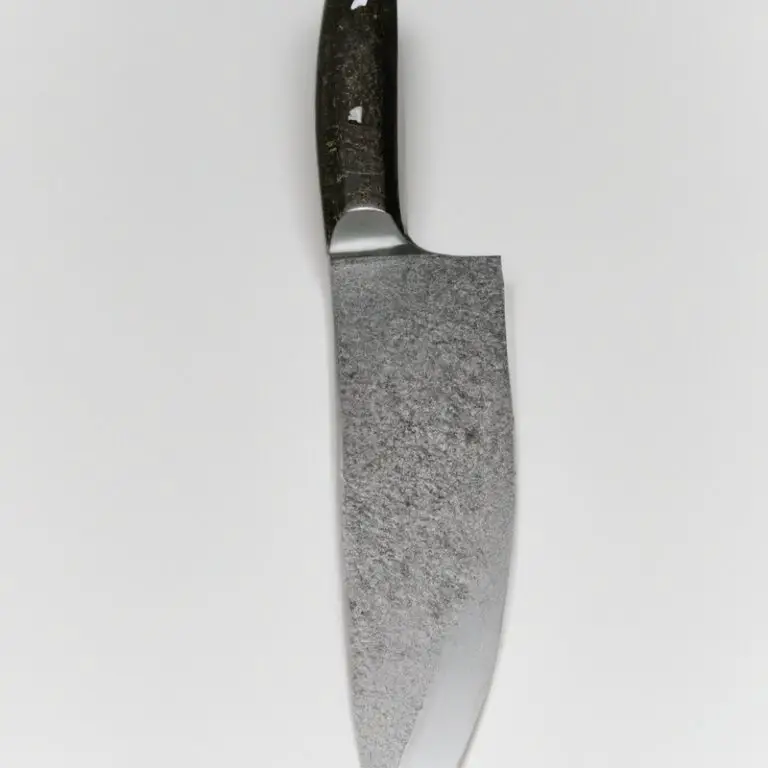Is It Better To Choose a Paring Knife With a Straight Or Serrated Edge? – Slice With Precision
Key Takeaways:
- A straight edge paring knife is best for precise and clean cuts on soft fruits and vegetables.
- A serrated edge paring knife is suitable for tough-skinned produce like tomatoes or citrus fruits.
- Consider the task at hand when deciding which edge to choose.
- Opt for high-quality knives from reputable brands for better performance and durability.
Are you tired of struggling to choose between a straight or serrated paring knife while preparing your meals? Whether you’re a professional chef or a home cook, the blade edge dilemma can be confusing.
As someone who has spent years working in the culinary industry, I understand how important selecting the right kind of knife is.
So, in this article, we’ll explore the pros and cons of each option and help you decide which type of paring knife is best suited for your specific cutting needs. From understanding the techniques to exploring their costs and lifespan, we’ll cover everything to help you make an informed decision.
| Edge Type | Pros | Cons |
|---|---|---|
| Straight | Sharpness: Straight edge knives are incredibly sharp and offer a clean, precise cut. Control: The straight edge allows for complete control when making cuts. Versatility: Straight edge knives can be used for a wide range of tasks, including peeling, trimming, and slicing. | Durability: Straight edge knives are more prone to dulling and require more frequent sharpening. Difficulty: The sharp straight edge can easily slip and cause injuries if not used properly. |
| Serrated | Longevity: Serrated knives retain their sharp edges for longer periods of time, reducing the need for frequent sharpening. Flexibility: The serrated edge allows for easy cutting through tough, fibrous foods like tomatoes and crusty bread. Safety: The serrated edge provides a less slippery grip, reducing the risk of injury. | Precision: The serrated edge can cause tearing or squishing in some foods, resulting in uneven cuts. Specialization: Serrated knives are more limited in their uses and can’t perform as many tasks as straight edge knives. |
Straight vs Serrated: The Blade Edge Dilemma
When it comes to choosing between a straight or serrated paring knife, there are a few key differences to keep in mind. Straight edge knives are best for slicing and chopping tasks, while serrated knives are ideal for cutting through tough or fibrous foods.
However, straight edge knives require sharper maintenance to maintain their edge and may not work as well with certain types of foods.
Ultimately, the decision comes down to personal preference and the tasks at hand. It’s best to have both types of knives in your kitchen arsenal to ensure versatility and efficiency.
The Pros and Cons of using a straight-edge paring knife
The straight-edge paring knife, also known as a plain-edge knife, has been a staple kitchen tool for many years. Here are some of its pros and cons to help you decide if it’s the right choice for you: Pros:
- Versatility: Straight-edge knives are ideal for all kinds of tasks, from peeling fruit and vegetables to mincing garlic and herbs.
- Precise cuts: The plain edge allows for more controlled and accurate cuts, making it great for delicate work such as trimming fat from meat or deveining shrimp.
- Easy to sharpen: Sharpening a straight-edge knife is simpler than sharpening a serrated one, and can be done easily with a honing steel or sharpening stone.
Cons:
- Struggles with tough skins: Straight-edge knives may struggle when it comes to cutting through tougher materials like the skin of a tomato or the rind of a melon.
- Requires maintenance: As with any knife, a straight-edge paring knife requires regular maintenance to keep its edge sharp. If you’re not willing or able to maintain it, a different knife might be a better choice.
- Can be dangerous: The sharpness of a straight-edge knife means that it can be dangerous if not used carefully. It’s essential to keep your fingers and hands out of the way of the blade.
Overall, a straight-edge paring knife is a great all-around kitchen tool that can make prep work a lot easier. However, if you’re frequently cutting through tough materials or don’t want to spend time maintaining your knife, you might want to consider a serrated knife instead.
The Benefits and Drawbacks of a serrated paring knife
Serrated paring knives are ideal for slicing fruits and vegetables with tough skins while keeping the flesh intact. The saw-like edges make cutting through the skin effortless, while the pointed tips give you precision control.
However, serrated knives are harder to sharpen than straight-edge knives and can be challenging to use on delicate foods like tomatoes, where you need a very light touch.
They are also more prone to breakage since the teeth can chip or snap off if not properly cared for. Nonetheless, they make for a great addition to any home cook’s arsenal, especially for items like pineapple, oranges, grapefruits, lemons, and limes.
How to choose the right paring knife for your needs
To choose the right paring knife for your needs, consider the following factors:
- Comfort: Make sure the knife feels comfortable and balanced in your hand. It should have a sturdy handle that is easy to grip and control.
- Blade Material: Look for high-quality steel blades with a full-tang design for better durability and balance.
- Blade Length: Choose a blade length that is appropriate for the tasks you will perform. Generally, a 3-4 inch blade is ideal for most tasks.
- Straight vs. Serrated: Determine whether you will be using the knife for slicing or peeling. Straight blades are better for peeling, while serrated knives work well for slicing.
- Brand Reputation: Consider the knife’s brand reputation and reviews from other consumers to ensure that you are getting a quality product.
By considering these factors while choosing a paring knife, you can find the perfect one that will make food preparation easy and efficient.
Understanding the Technique – Straight-edge vs Serrated paring knives
When it comes to the technique, both the straight-edge and serrated paring knife have their advantages. Straight-edge paring knives are best for precise cuts and smooth slicing, while serrated knives are suitable for cutting through tough skin and delicate fruits or vegetables.
The technique for using a straight-edge paring knife involves a smooth and steady slicing motion, while a serrated knife requires a sawing motion to cut through the skin or flesh.
When using a serrated knife, it’s essential to maintain a consistent pressure to avoid crushing the food. Overall, choosing the right knife for your needs depends on the type of food you’ll be cutting, your personal preference, and your skill level.
Beginners may find the serrated knife to be easier to use, while experienced chefs may prefer the precise cutting power of a straight-edge knife.
Regardless of which type of knife you choose, it’s crucial to maintain the blade’s sharpness to ensure optimal performance and safety. Regular sharpening and honing can help extend the life of your paring knife and provide smoother and cleaner cuts.
Straight vs serrated: Best Uses for each type of paring knife
When it comes to the best uses for each type of paring knife, the straight-edge paring knife is ideal for tasks that require precision and control. This includes peeling, trimming, and slicing small fruits and vegetables, as well as intricate tasks like deveining shrimp or hulling strawberries.
On the other hand, the serrated paring knife is better suited for tougher-skinned fruits and vegetables, such as tomatoes, citrus fruits, and crusty bread.
The serrated edge can easily grip and saw through the tough exteriors without crushing or squishing the soft interiors. Overall, both types of paring knives have their unique strengths and purposes.
It ultimately depends on the specific task at hand and personal preference.
Having both a straight and serrated paring knife in your kitchen arsenal can offer versatility and ensure you have the right tool for any job.
How to maintain your paring knife’s edge for optimal use
To maintain your paring knife’s edge for optimal use, follow these steps:
- Sharpen regularly: A dull knife is not only ineffective but also dangerous. Sharpen your paring knife regularly using a honing steel or sharpening stone.
- Store properly: Store your paring knife in a knife block, magnetic strip, or protective sheath to prevent chipping and dulling.
- Hand-wash only: Avoid putting your paring knife in a dishwasher as the high temperatures and harsh detergents can damage the blade. Instead, hand-wash with mild soap and water, then dry thoroughly.
- Avoid hard surfaces: Do not use your paring knife on hard surfaces like glass, granite, or metal as they can dull the blade quickly.
By following these simple steps, you can keep your paring knife in excellent condition and enjoy optimal performance for all your culinary needs.
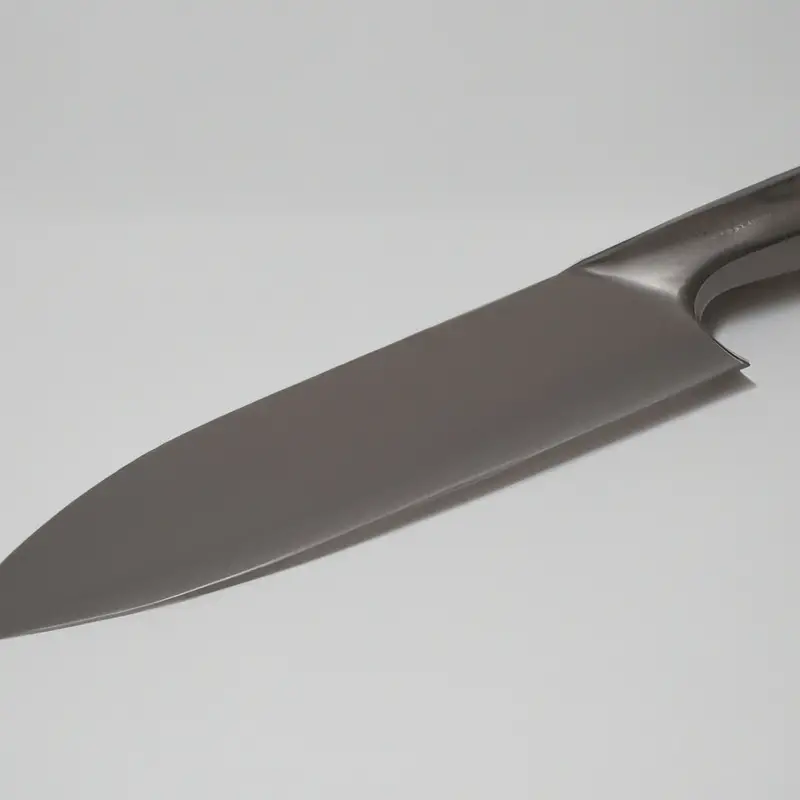
Straight or serrated: Which one lasts longer?
When considering the longevity of a paring knife, a straight-edge blade has the potential to last longer than a serrated one. This is because it is easier to sharpen and maintains its sharpness for a longer period of time.
A serrated knife’s uneven teeth require more effort and skill to sharpen, and they tend to become dull faster.
However, this doesn’t necessarily mean that a straight-edge knife is always the better choice. A serrated knife, despite its shorter lifespan, is better suited for tasks that involve cutting through tough or crusty surfaces, such as bread or tomatoes.
So, it ultimately comes down to personal preference and intended use.
Regardless of which type of paring knife you choose, proper maintenance and sharpening are crucial for ensuring longevity. Keep the blade clean and dry, avoid cutting on hard surfaces like glass or stone, and sharpen it regularly with a honing steel or sharpening stone.
In summary, a straight-edge paring knife tends to last longer than a serrated one, but the best choice depends on individual needs and preferences.
Regular maintenance is key to extending the lifespan of any type of knife.
The Price Point – Which is more affordable?
When it comes to the price point, straight-edge paring knives are generally more affordable than serrated ones. This is because the manufacturing process for straight-edge knives is simpler and less time-consuming.
Additionally, the lack of teeth on the blade reduces production costs.
While some high-end straight-edge knives can still be expensive, they often come with added features such as higher quality materials and ergonomic designs. Serrated knives, on the other hand, tend to be more expensive due to the complexity of their blades.
The teeth require precise engineering to create the perfect edge, which can drive up the price.
Overall, if you’re looking for a budget-friendly option, a straight-edge paring knife is the way to go. However, it’s worth considering investing in a more expensive knife if you value high-quality materials and superior design.
Ultimately, the best decision depends on your personal preferences and budget.
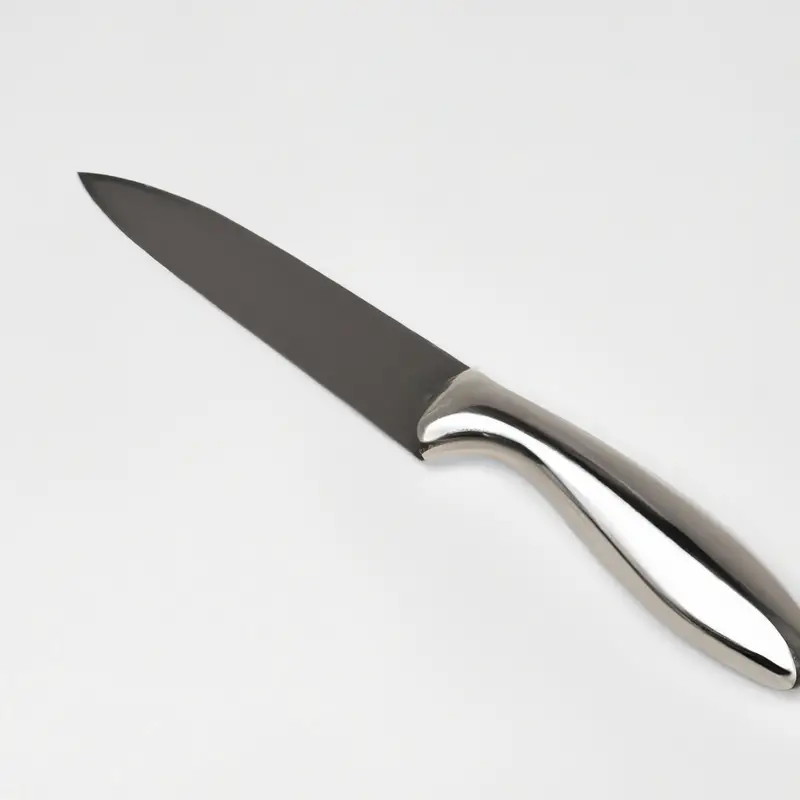
Final Verdict: Straight or serrated paring knife?
When it comes to choosing between a straight or serrated paring knife, the final verdict depends on your personal preference, needs, and intended use. Straight-edge knives are ideal for precision cutting tasks, such as peeling and trimming fruits and vegetables, while serrated knives are better suited for cutting through tougher or thicker skinned produce, such as tomatoes or citrus fruits.
Ultimately, the best option is to have both types of knives in your kitchen for optimal versatility.
It is also important to consider the knife’s quality, maintenance, and price point to ensure long-lasting use and value for your money.
Final Verdict
When it comes to choosing between a straight or serrated paring knife, there is no one-size-fits-all answer. Each type has its own unique benefits and drawbacks, and the decision ultimately comes down to personal preference and the task at hand.
However, by understanding the differences between the two, you can make an informed decision and select the best paring knife for your needs.
Whether you opt for the precision of a straight-edge blade or the versatility of a serrated edge, with proper maintenance and use, both types can provide reliable and long-lasting performance. So, consider your needs and preferences carefully, and invest in a paring knife that will serve you well in the kitchen for years to come.
Remember, the right paring knife can make all the difference in your culinary creations, so choose wisely and enjoy the benefits of a well-crafted blade.

